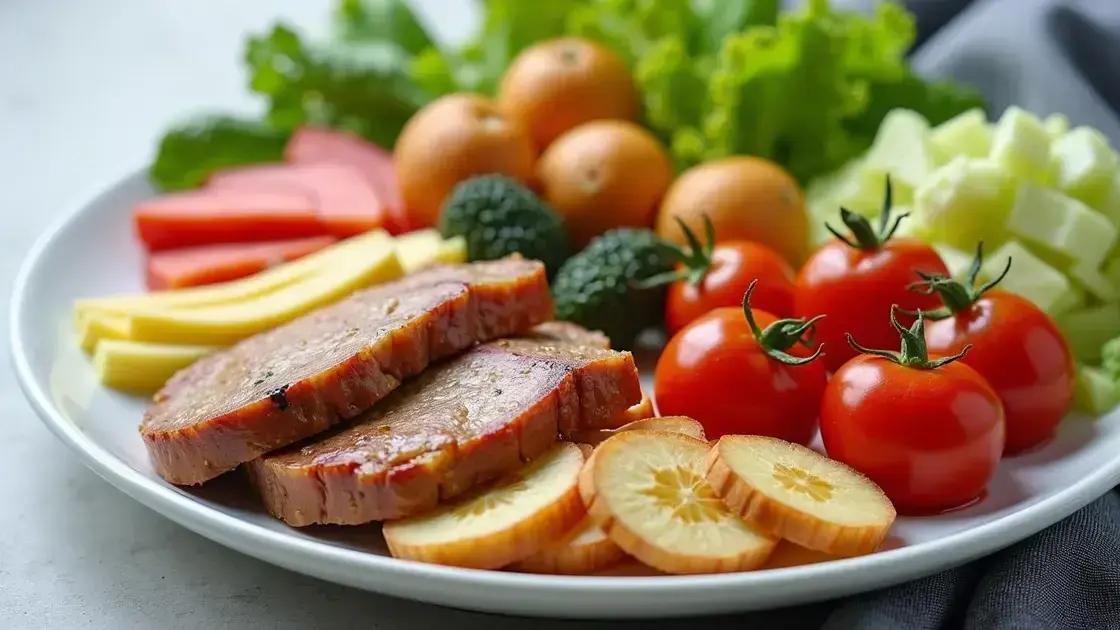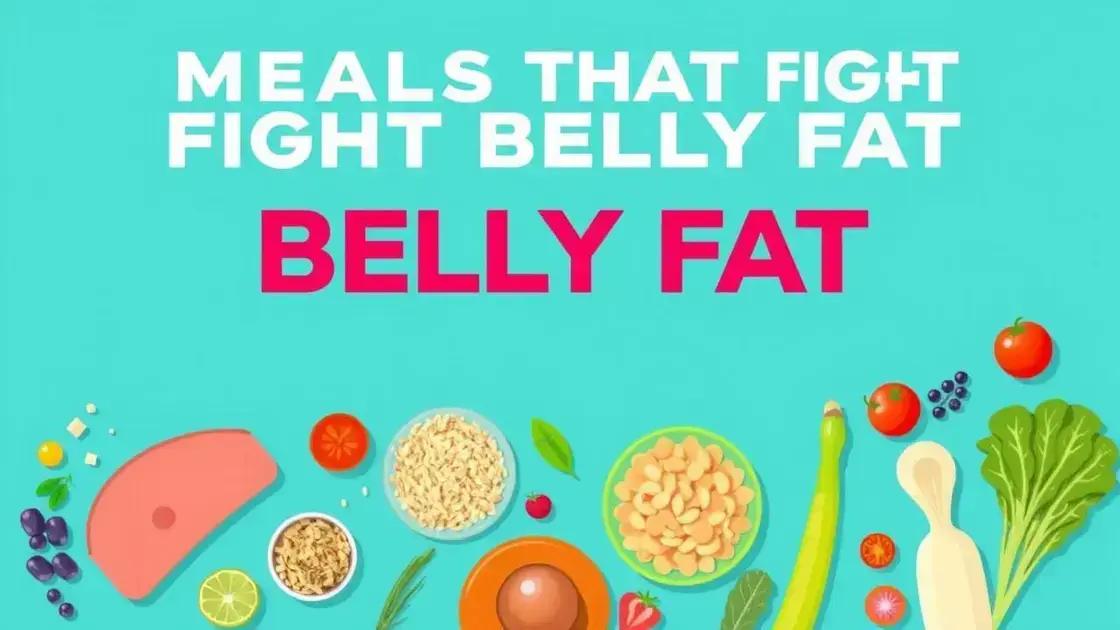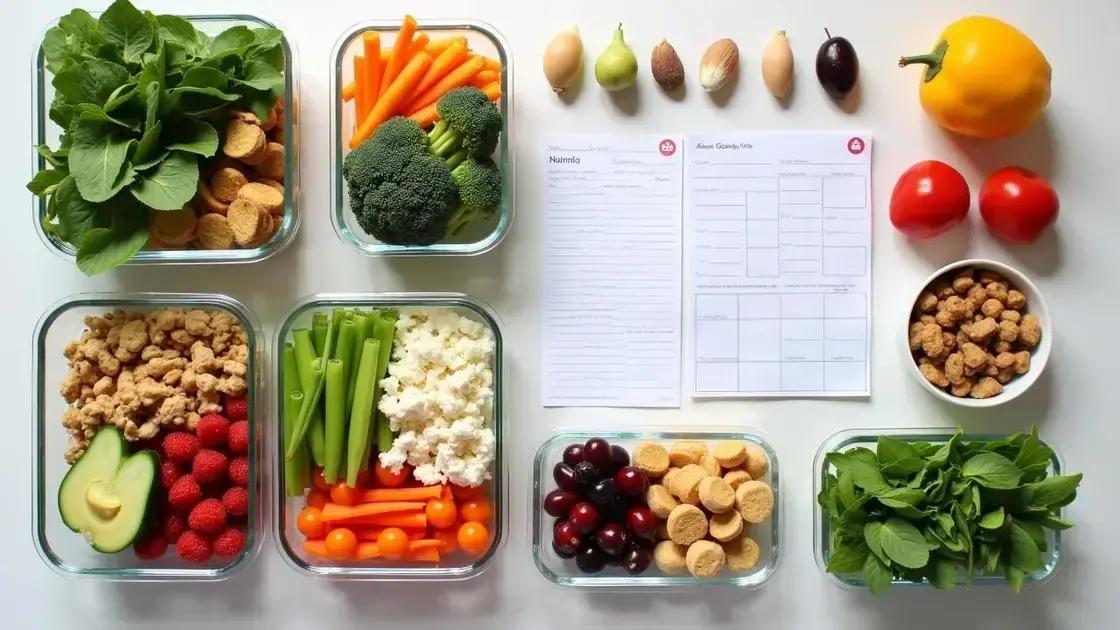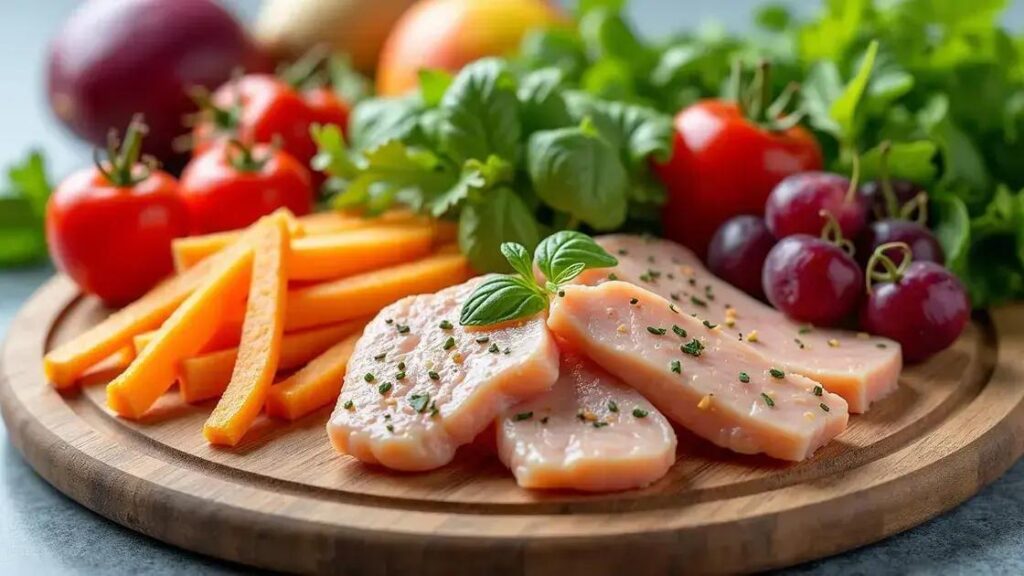To reduce belly fat effectively, focus on targeted nutrition by including lean proteins, whole grains, fruits, and vegetables in your diet, plan your meals ahead of time, and engage in regular exercises like cardio and strength training while maintaining consistency in your routine.
Reducing belly fat can feel like an uphill battle, but with targeted nutrition, it’s entirely possible to make significant changes. By focusing on specific foods and meal plans, you can boost your metabolism, curb cravings, and maximize your weight loss results. This article uncovers essential strategies to understand targeted nutrition and its role in your journey. Alongside practical meal planning tips and exercise recommendations, you’ll be equipped with the knowledge you need to tackle belly fat effectively.
Understanding Targeted Nutrition

Understanding targeted nutrition is essential for anyone looking to reduce belly fat effectively. This approach focuses on the specific nutrients your body needs to promote fat loss while ensuring optimal health. Instead of following generic dieting advice, targeted nutrition emphasizes a personalized plan based on your unique body composition and metabolic needs.
What is Targeted Nutrition?
Targeted nutrition involves selecting foods that are rich in essential nutrients while minimizing those high in empty calories. The goal is to create a diet that supports your body’s metabolic processes and encourages fat burning. This method ensures that you provide your body with the right fuel it needs to function efficiently.
Key Components of Targeted Nutrition
There are several key components to consider when practicing targeted nutrition:
- Macronutrients: Focus on balancing protein, carbohydrates, and fats. Protein helps build muscle, while healthy fats and carbohydrates provide energy.
- Micronutrients: Vitamins and minerals play crucial roles in metabolism and overall health. Incorporate a variety of fruits and vegetables to ensure you meet your micronutrient needs.
- Hydration: Staying hydrated aids digestion and supports weight loss. Aim for at least 8 cups of water daily.
Personalizing Your Nutritional Plan
To create your targeted nutrition plan, start by assessing your current eating habits and identifying areas for improvement. Consider using a food diary to track your meals and snacks. This will help you pinpoint your consumption of high-calorie or low-nutrient foods.
After identifying your eating patterns, tailor your nutrition plan to include foods that support fat loss. This will involve focusing on whole foods, lean proteins, and healthy fats while limiting processed foods, sugar, and refined carbs.
Foods that Fight Belly Fat

When it comes to reducing belly fat, choosing the right foods can make a huge difference. Certain foods can not only help you lose weight but also target belly fat specifically. Here are some of the top foods that fight belly fat:
1. Lean Proteins
Lean proteins such as chicken, turkey, and fish can help you stay full while boosting your metabolism. They require more energy to digest and thus burn more calories in the process.
2. Whole Grains
Whole grains like brown rice, quinoa, and oats are packed with fiber. Fiber-rich foods help you feel full longer and reduce cravings, aiding in weight loss.
3. Fruits and Vegetables
Non-starchy vegetables like broccoli, spinach, and bell peppers, along with fruits such as berries and apples, are low in calories and high in vitamins. Their fiber content promotes digestion and helps manage weight effectively.
4. Healthy Fats
Incorporating healthy fats like avocados, nuts, and olive oil in your diet can help you feel satisfied. These fats aid in nutrient absorption and can even help reduce belly fat.
5. Fermented Foods
Foods like yogurt, kefir, and sauerkraut contain probiotics that promote a healthy gut. A balanced gut can improve digestion, boost metabolism, and help in reducing belly fat.
By focusing on these foods in your diet, you can effectively target belly fat while maintaining a balanced and healthy nutritional plan.
Meal Planning Tips

Meal planning is a vital part of reducing belly fat with targeted nutrition. It helps you stay organized and make healthier choices throughout the week. Here are some practical tips for effective meal planning:
1. Set Aside Time
Pick a day each week to plan your meals. This allows you to shop for ingredients and prepare your meals ahead of time. Setting a schedule makes the process easier and less stressful.
2. Create a Balanced Menu
When planning your meals, include a variety of food groups. Aim for a balance of lean proteins, whole grains, healthy fats, and plenty of fruits and vegetables. This variety ensures you get the nutrients your body needs.
3. Use a Grocery List
Write a grocery list based on your meal plan. Stick to this list while shopping to avoid impulse buys and unhealthy snacks. This keeps you focused on the foods that support your weight loss goals.
4. Batch Cooking
Consider batch cooking to save time during the week. Prepare large portions of meals and store them in individual containers. This makes it easy to grab a healthy meal when you’re short on time.
5. Keep Snacks Healthy
Plan for snacks to keep hunger at bay. Choose healthy options like fruits, nuts, or yogurt. Having healthy snacks on hand prevents you from reaching for unhealthy foods when cravings hit.
By following these meal planning tips, you can simplify your eating habits and stay on track with your goal of reducing belly fat through targeted nutrition.
Exercise Tips for Belly Fat Loss

Incorporating exercise into your routine is crucial for reducing belly fat. Here are some effective exercise tips to help you along your journey:
1. Focus on Cardio
Cardiovascular exercises like running, swimming, and cycling are excellent for burning calories. Aim for at least 150 minutes of moderate-intensity cardio each week to shed those extra pounds.
2. Include Strength Training
Strength training helps build muscle, which can increase your metabolic rate. Incorporate exercises like squats, lunges, and push-ups at least two days a week. Using weights or resistance bands can enhance your results.
3. Try High-Intensity Interval Training (HIIT)
HIIT workouts alternate between short bursts of intense activity and periods of rest. These workouts can effectively burn fat in a shorter amount of time compared to steady-state exercises. Aim for 20-30 minutes of HIIT a few times a week.
4. Stay Consistent
Consistency is key to reducing belly fat. Make exercise a regular part of your routine. Set specific days and times for your workouts to help you stick to your plan.
5. Add Core Exercises
Incorporate exercises targeting the abdominal muscles, like planks, crunches, and Russian twists. While these won’t spot-reduce belly fat, they will strengthen your core and improve muscle tone.
By combining these exercise tips with targeted nutrition, you can increase your chances of effectively reducing belly fat and improving your overall health.
In Summary: Combining Nutrition and Exercise for Belly Fat Loss
Reducing belly fat effectively requires a comprehensive approach that combines targeted nutrition and regular exercise. By understanding the importance of meal planning, incorporating belly-fat-fighting foods, and staying active through various workout routines, you can achieve your weight loss goals.
Sticking to a healthy eating pattern, planning your meals ahead of time, and engaging in both cardiovascular and strength training exercises will help you not only lose belly fat but also improve your overall health.
Remember, consistency is key, and making small, sustainable changes will lead to lasting results. Embrace this journey to a healthier you!
FAQ – Common Questions about Reducing Belly Fat with Targeted Nutrition
What is targeted nutrition?
Targeted nutrition focuses on choosing specific foods that promote fat loss and support overall health, rather than following a generic diet.
What foods should I eat to reduce belly fat?
Incorporate lean proteins, whole grains, fruits, vegetables, and healthy fats into your diet. Foods like yogurt and nuts also support belly fat loss.
How can meal planning help with weight loss?
Meal planning helps you stay organized, avoid unhealthy choices, and ensures you have healthy meals ready, making it easier to stick to your nutrition goals.
What types of exercise are best for belly fat loss?
Combining cardio, strength training, and high-intensity interval training (HIIT) will be most effective for burning calories and targeting belly fat.
How often should I exercise to lose belly fat?
Aim for at least 150 minutes of moderate-intensity exercise each week, including a mix of cardio and strength training sessions.
Is it necessary to do core-specific workouts?
While core workouts won’t spot-reduce fat, they strengthen abdominal muscles and improve overall stability, which is beneficial during other exercises.












